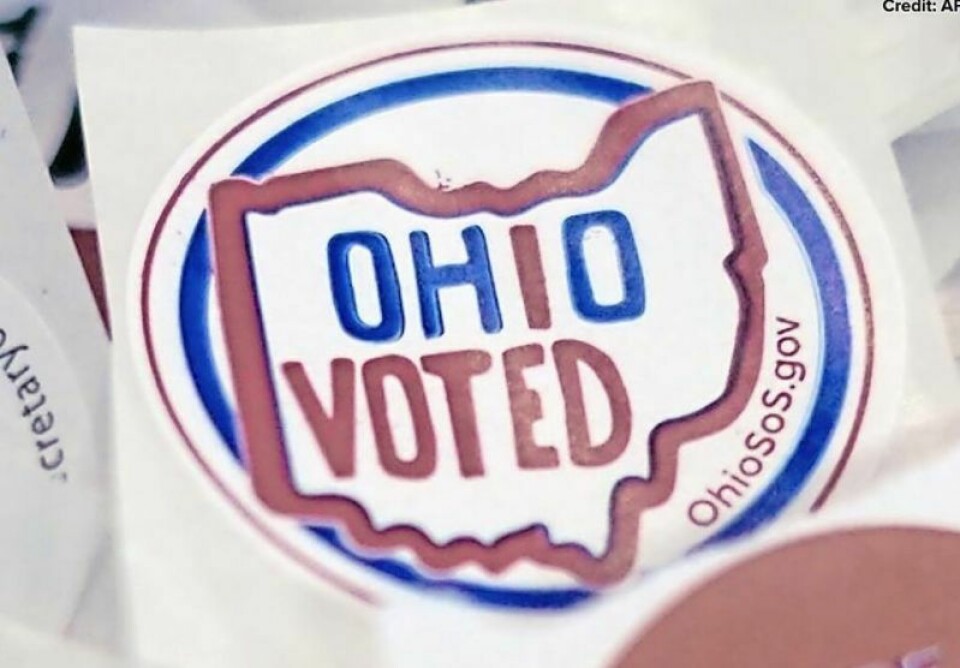Explaining the 2 issues on the statewide Nov. 7 ballot

There are two statewide issues on the Nov. 7 ballot in Ohio.
Issue 1 relates to reproductive healthcare while Issue 2 concerns the legalization of marijuana in Ohio.
Issue 1
There has been much confusion surrounding Issue 1 on the upcoming Nov. 7 election in Ohio, making it challenging to understand exactly what a yes or no vote means. Accurate information will allow individuals to make a choice based on their values and the facts and not on political spin or misinformation.
What is the law in Ohio now?
Ohio law bans abortion after six weeks of pregnancy. Ohio law makes no exception for rape or incest. Currently, a judge has temporarily blocked this ban, and the Ohio Supreme Court is reviewing it. If the court rules in favor of the state, this law will go into effect.
A yes vote on Issue 1 supports amending the Ohio Constitution to restore the right to reproductive healthcare such as miscarriage care, contraception, fertility treatments, the right to stay pregnant and the right to an abortion prior to the time of viability, except in cases where the patient’s physician determines the patient’s life or physical health would be endangered by maintaining the pregnancy.
A no vote opposes amending the Ohio Constitution and would allow the state to continue to create additional legislation to limit access to reproductive healthcare including abortion.
Will Issue 1 affect parents’ rights?
There is nothing in the amendment that changes current laws or anything else that would affect or change any laws pertaining to parental rights. There is nothing in the amendment that has anything to do with gender-affirming care. Children are not allowed to receive any elective medical treatment without parental consent. That will not change.
Why is the ballot language different?
According to the information sheet from the League of Women Voters, a national nonpartisan grassroots organization, issues Ohioans vote on go to the Ohio Ballot Board to prescribe and certify the ballot language. Sometimes the wording on the ballot is different than the proposed amendment. This is sometimes done to simplify or summarize the details. The league said, “Sometimes, unfortunately, a ballot board decision to change the language voters will see is driven by partisan objectives.”
Find the proposed amendment online at www.lwvohio.org/factsonnovembersissue1. Click on the link under additional resources.
Who is for, against Issue 1?
An organization named Ohioans United for Reproductive Rights is leading the campaign to pass Issue 1. According to its website, it is a coalition of statewide organizations that includes the American Civil Liberties Union of Ohio, Ohio Physicians for Reproductive Rights, Abortion Fund of Ohio, New Voices for Reproductive Justice, Ohio Women’s Alliance, Planned Parenthood Advocates of Ohio, Preterm-Cleveland, Pro-Choice Ohio, and Unite for Gender and Reproductive Equality.
Groups supporting Issue 1 include the American Association of Obstetricians and Gynecologists, Ohio Section, the National Association of Social Workers, Ohio Physicians for Reproductive Rights, and the Society for Maternal-Fetal Medicine.
An organization named Protect Women Ohio, which, according to its website, is a coalition of people and organizations, leads the campaign opposing Issue 1.
Groups opposing the amendment include the Center for Christian Values, the Ohio Catholic Conference and Ohio Right to Life.
Issue 2
A yes vote supports legalizing marijuana use for adults age 21 and older and allows adults to possess up to 2 ½ ounces of marijuana in any form except adult-use extract, which cannot exceed 15 grams. Adults age 21 and older also would be permitted to grow up to six cannabis plants.
A yes vote also supports enacting a 10% tax on marijuana sales.
A no vote opposes legalizing marijuana use for adults age 21 and older in the state of Ohio.
The initiative petition and the full text of the law can be found at www.ohiosos.gov/globalassets/ballotboard/2022/petitionfull-textandsummary.pdf.
Voting
At the end of 2022, Ohio’s General Assembly passed changes to election laws, particularly impacting the kind of ID voters need when voting and shortening the early voter period. Information regarding Ohio’s new election laws can be found at www.lwvohio.org/ohiovotingchanges.
























